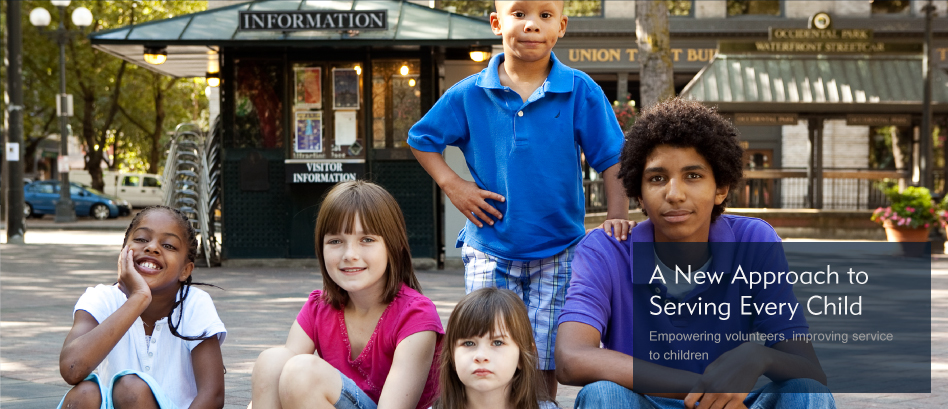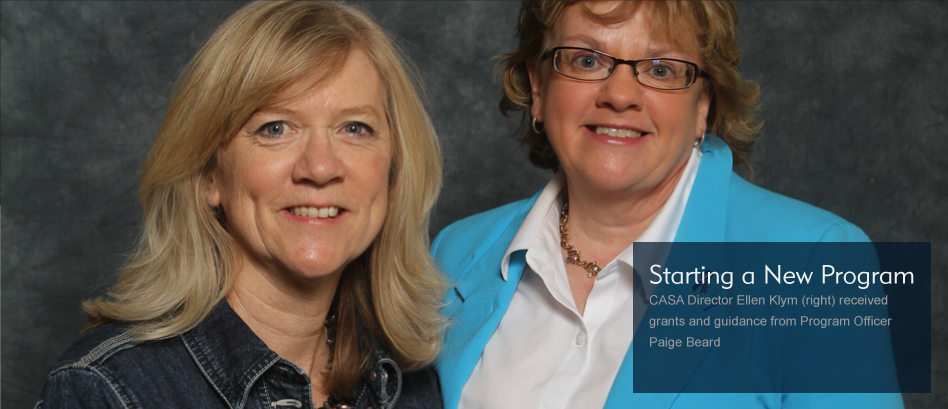National CASA provides tools and support necessary to sustain and grow strong CASA programs. Member programs have access to training materials, online resources, support from dedicated program officers, and grant funding opportunities.
Peer Coordinator Model Redefines Staff and Volunteer Roles
Lane County (OR) CASA was doing everything right. But they still could not put a CASA volunteer in the life of every child who needed one.
"Our fundraising efforts met with success, fueling ongoing growth. We were following National CASA standards of staff-to-volunteer ratios," says Megan Shultz, executive director of Lane County CASA. "But at some point I realized that without a major paradigm shift, we were never going to be able to consistently serve every child referred to our program by a judge."
Enter the Peer Coordinator Model, an organizational structure that redefines the roles of CASA program staff—and selected volunteers. The model was being developed organically at several sites throughout the country before National CASA began to work with implementing programs to support the development of a national model. An early adopter, Maricopa County (AZ) CASA, was awarded a "Promising Practices Spotlight" for successful work in this area in 2011. By the end of 2012, more than 50 of National CASA's 933 member programs were at some stage of implementing the model.
Under the Peer Coordinator Model, ratios of CASA program staff members to volunteers are shifted, and roles of staff change.
In the traditional model—employed by the majority of CASA programs—one volunteer supervisor works with 30 CASA volunteers, each of whom typically works on a maximum of two cases at a time. In programs employing the Peer Coordinator Model, one staff volunteer supervisor works with a maximum of 15 volunteer peer coordinators. These volunteers in turn support 5-10 advocates serving children.
One demonstrated benefit of the Peer Coordinator Model is increasing the number of children served by CASA volunteers without substantially increasing the number of CASA program staff. The structure has also been observed to increase volunteer retention, by offering volunteers additional opportunities for growth and responsibility. Lane County and other CASA programs that have successfully implemented the model have also experienced the benefits to new volunteers, who receive more one-on-one coaching under the Peer Coordinator Model.
"I recently had a judge tell me that she is seeing a difference in our CASA volunteers' courtroom presentations, that they are more confident and willing to speak up," says Megan. "That surprised me! I had not expected that added improvement."
Lane County CASA worked closely with National CASA Regional Program Officer Michael Heaton, a champion of the Peer Coordinator Model, to bring the structure to their program. In 2012, Lane County CASA published Peer Coordinator Model: A Guide to Transition, through a grant from National CASA. The 49-page manual guides CASA programs through the process of assessing if the Peer Coordinator Model is right for them, and provides templates and resources for those embarking on the change. As Megan describes it: "We created it so that others would learn from our mistakes, rather than repeat them."
The Guide to Transition is one of many resources that National CASA is making available to programs interested in assessing whether the Peer Coordinator Model is right for them. Training materials, local program implementation documents and change-management tools are provided on the National CASA website. National CASA Regional Program Officer Michael Heaton leads monthly phone calls during which Peer Coordinator Model programs share innovations and best practices, and all five regional program officers support programs' exploration of using the model.
National implementation of the Peer Coordinator Model and Flex-Learning Volunteer Training Curriculum are two examples of National CASA's work to recognize, support and expand upon innovations taking place at local CASA programs.


